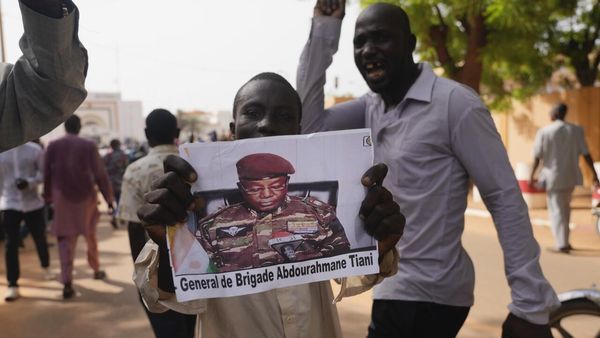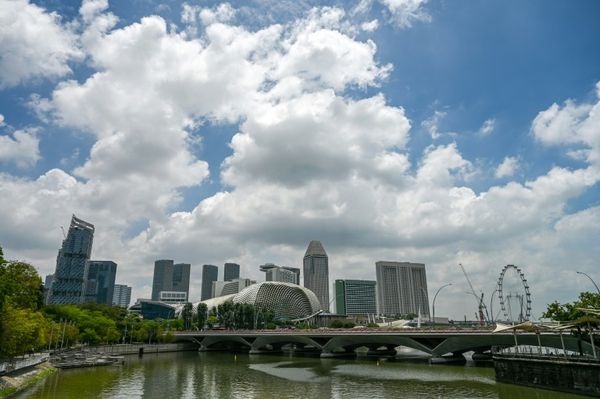Contemporary economic challenges in Africa appear to be shifting the continent into a new era of development. From COVID-19 to war-induced inflation, many countries in Africa are facing significant economic challenges. The crises of recent years come on top of longer-term increases in debt, especially after the 2014 commodity price shock.
These circumstances have been the backdrop to recent conflicts, coups, and regime changes. But these contemporary crises follow a period of relatively successful state-led development in the first two decades of the 21st century, resulting in a hype about the new “African lions” and the emergence of an “Africa rising” narrative.
Two cases stand out as emblematic of this era: Rwanda’s vision of a Dubai-style financial and service hub, and Ethiopia’s rapid manufacturing and infrastructure ambitions.
Much has been written about the international factors behind this era of state-led development. The focus has been on the extension of private finance and the growth of “new” lenders such as China, India and Brazil. But these perspectives often overlook important questions. What has inspired ambitious African national plans over the last two decades? What assumptions were made about how development happens and how it should look?
In new research published in a special issue of a journal, we analyse these modernising visions. We unpick their differences and commonalities using cases from multiple countries.
Our emphasis is on understanding ideas, beliefs, and norms in shaping development plans. Such perspectives are often overlooked in the study of Africa. Scholars have often presumed that ruling elites are primarily interested in narrow material power or self-enrichment. We argue that ideas and beliefs underpin the goals and content of development plans.
The research covered in the special issue covers Angola, Eritrea and Tanzania, but in this article we will unpack our analysis of Ethiopia and Rwanda.
20th century modernist development
Many of the elements of development this century look like resurgent 20th century “high modernism”. This is a term coined by scholar James Scott to describe top-down, state-led, authoritarian programmes of economic development. These programmes typically used infrastructure and technology to engineer supposedly “backward”, “traditional” people and landscapes into efficient, modern, rational alternatives.
Perhaps the chief examples here are large dams. Historically, dams were viewed as the hallmark projects of modernisation. They could tame nature and deploy technology, whether electricity or irrigation, to found modern economies and workers. Ghana’s Akosombo Dam is one such project.
But building dams paused from the mid-1990s to the mid-2000s as the World Bank and other major funders withdrew. Dam projects were seen as having too-high social and economic costs and as not performing well. Such negative impacts also generated significant protests.
Rwanda’s case
Underpinning Rwanda’s model is a concentrated Leninist-style power structure. The president and associated elites chart the path to progress. The party, with its affiliated companies and investment funds, is all powerful – not solely the state. Rwanda also revived mid-century plans, from dams to an east African railway corridor. Electricity was deemed central, resulting in a rapid, but overambitious five-fold increase in over 15 years.
This recent period was not just a reproduction of the 1960s, however. It had new elements. A Dubai-style aesthetic is central to the reinvented capital, Kigali, where the goal is to create a new corporate service hub, replete with skyscraper, conference centres, shopping malls and a new international airport. This replaces the 20th century obsession with industrial sites and brutalist concrete.
Rather than the state-led programmes of the 20th century, pro-market reforms have been incorporated. There’s an embrace of private enterprise, a stock market and investment. The country’s electricity boom was largely enacted by private firms and Rwanda consistently ranks as one of the top countries in the Ease of Doing Business index. It takes hours, not weeks, to set up a company and there’s a speedy regulatory bureaucracy.
In some cases, “neoliberal” reforms have been brought in, with private enterprise and investment in previously state-controlled domains. Rwanda embraced corporate investment and ownership while making business-friendly, low-tax reforms. The private sector was given a big role in Rwanda’s boom to build over 40 microhydro plants in 15 years.
New public management techniques, with individual incentives and civil service targets, were adopted.
Ethiopia’s case
Ethiopia focused on investments in large agricultural plantations and industrial parks. The result evoked 20th century modernisation drives. A broad-based infrastructure boom and an industrialisation strategy that moved agricultural produce up the value chain would transform the structure of the economy. The Grand Ethiopian Renaissance Dam, the Addis-Djibouti Railway and other megaprojects became symbols of this vision. The aim was to maintain state control of the commanding heights of the economy (electricity, water, telecommunications and aviation, among others), while building an industrial base that would absorb the surplus agricultural labour.
This was coupled with investments in education and health. In 2016, Ethiopia had the third highest ratio of public investment to GDP, but also one of the fastest economic growth rates globally.
Unlike Rwanda, this ideology has not survived. Progress in health, education and income was achieved but political tensions grew. By the mid 2010s, the material reality of people’s livelihoods could no longer keep up with the promises the ruling party had evoked. Dissent was not tolerated and led to mass protests, riots, and the eventual demise of the party. Since 2018, there has been a dramatic shift in ideology and vision with an openness to liberalisation, and a focus away from industrialisation to the service sector.
Continuity and change
Overall, our analysis reveals a combination of continuity and change during this period. It marks the triumph of an “African left”, with old titans like Tanzania’s Chama Cha Mapinduzi or Mozambique’s Frelimo joined by new revolutionary parties also inspired by Marxism.
The language of communism or socialism is not used explicitly. But a belief endures that top-down schemes and mega-infrastructure can catapult people into an “enlightened” future. Structural economic barriers are surmountable through technology and engineering.
Simultaneously, one cannot escape the language of the Davos establishment about the supremacy of markets, importance of foreign investment and pledges to tackle climate change and poverty. This illustrates the degree to which these illiberal modernisers are connected to international policymaking.
Our publication conceptualises this pattern of continuity and change, as a 10-point “illiberal modernisers” manifesto. Although holding considerable variation between countries, we argue that these these hegemonic ruling parties shared common goals of transforming society through an elite-defined programme.
Ultimately, the pattern of continuity and change demonstrates the importance of analysing ideas, beliefs, and values. Elites in Africa, just as elsewhere, are not only interested in power but are influenced by ideas about development.
Barnaby Joseph Dye receives funding from the Economic and Social Science Research Council (UK).
Biruk Terrefe received funding from the Heinrich Böll Foundation (Germany).
This article was originally published on The Conversation. Read the original article.







